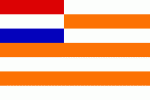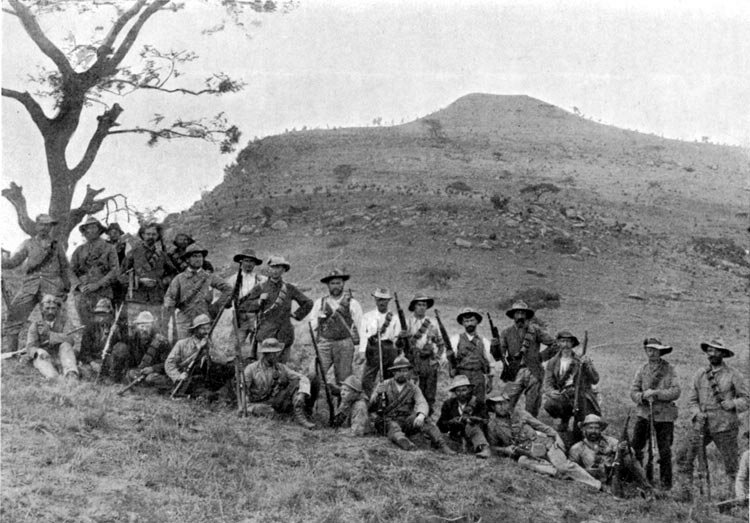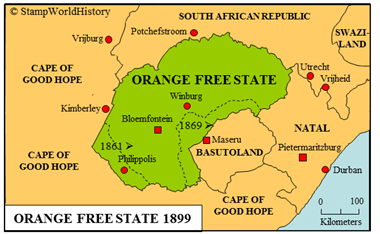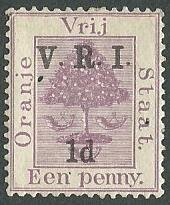
Orange Free State
Republic

Orange River
British Colony
Quick reference
General issues: Orange Free State, republic 1868-1897, Orange Free State, British occupation 1900-1902, Orange River Colony, British colony 1902-1910
Country name on general issues: Oranje Vrij Staat, Orange River Colony
Currency: 1 Shilling = 100 Pence 1868-1910
Population: 244 000 in 1901
Political history Orange Free State
Orange Free State is located in southern Africa. In the early 19th century the future Orange Free State is populated by different Bantu peoples and in smaller numbers the Khoisan. The first outside settlers are, in the 1820’s, the Griqua – a people with its origins in Boer settlers around Cape Town mixing with the Khoisan. The Griqua settle in the area of Philippolis. The Griqua, in the 1830’s, are followed by the Boers on the Great Trek who settle in the area of Winburg. Finally, in the 1840’s the British settle in the area around Bloemfontein – there to establish the Orange River Sovereignty. A changing focus in the British colonial policy in Africa causes the British to withdraw from Bloemfontein shortly after. In 1854, the republic of Orange Free State is founded – a largely Boer republic.
Orange Free State extends its territory twice. First, in 1861 the Griqua lands around Philippolis are annexed – the Griqua trekking further east to lands that eventually become part of Cape of Good Hope. Next, in 1869 part of Basutoland is annexed, thus establishing the final borders of Orange Free State.

1900 – Orange Free State military during the Second Boer War
In the first years after its foundation, the Orange Free State develops into a politically stable and economically prosperous state. Orange Free State manages to develop good relations with both the neighboring British and the Boer in the South African Republic. During the First Boer War, from 1880 to 1881, between the British and the South African Republic, Orange Free State retains its neutrality.
In the 1890’s, Orange Free State develops closer ties with the South African Republic. Thus, in the Second Boer War, from 1899 to 1902, Orange Free State sides with the South African Republic fighting against the British. The British gain the upper hand and, in 1900, Orange Free State is largely occupied by the British. The Boer resort to a guerrilla war and finally surrender in 1902. The British annex Orange Free State as the British Orange River Colony – de facto in 1900, de jure in 1902. The Orange River Colony, in 1910, joins the Union of South Africa of which it currently forms the Free State province.
Postal history Orange Free State
The first stamps for Orange Free State are issued in 1868. These, and all subsequent issues, are of the same design: an orange tree and three powder horns inscribed ‘Oranje Vrij Staat'[1]‘Orange Free State’ in Afrikaans. . Due to frequent shortages, many overprints with new face values are issued. Orange Free State will issue stamps until 1897.
The British, from 1900, issue stamps for use in the parts of Orange Free State they have occupied. A first set is issued in 1900 – overprints on the issues of Orange Free State reading ‘V.R.I'[2]‘Victoria Regina Imperatrix’ or ‘Victoria Queen & Empress’ and a new face value. More overprints follow between 1900 and 1902, now stamps of Cape of Good Hope overprinted ‘Orange River Colony’. Definitives for the Orange River Colony are issued between 1903 and 1909. These are, from 1910, superseded by the issues of the Union of South Africa, but will remain valid for use in all parts of the Union of South Africa until 1937.
Album pages
← Previous page: ObockNext page: Portuguese Africa →



